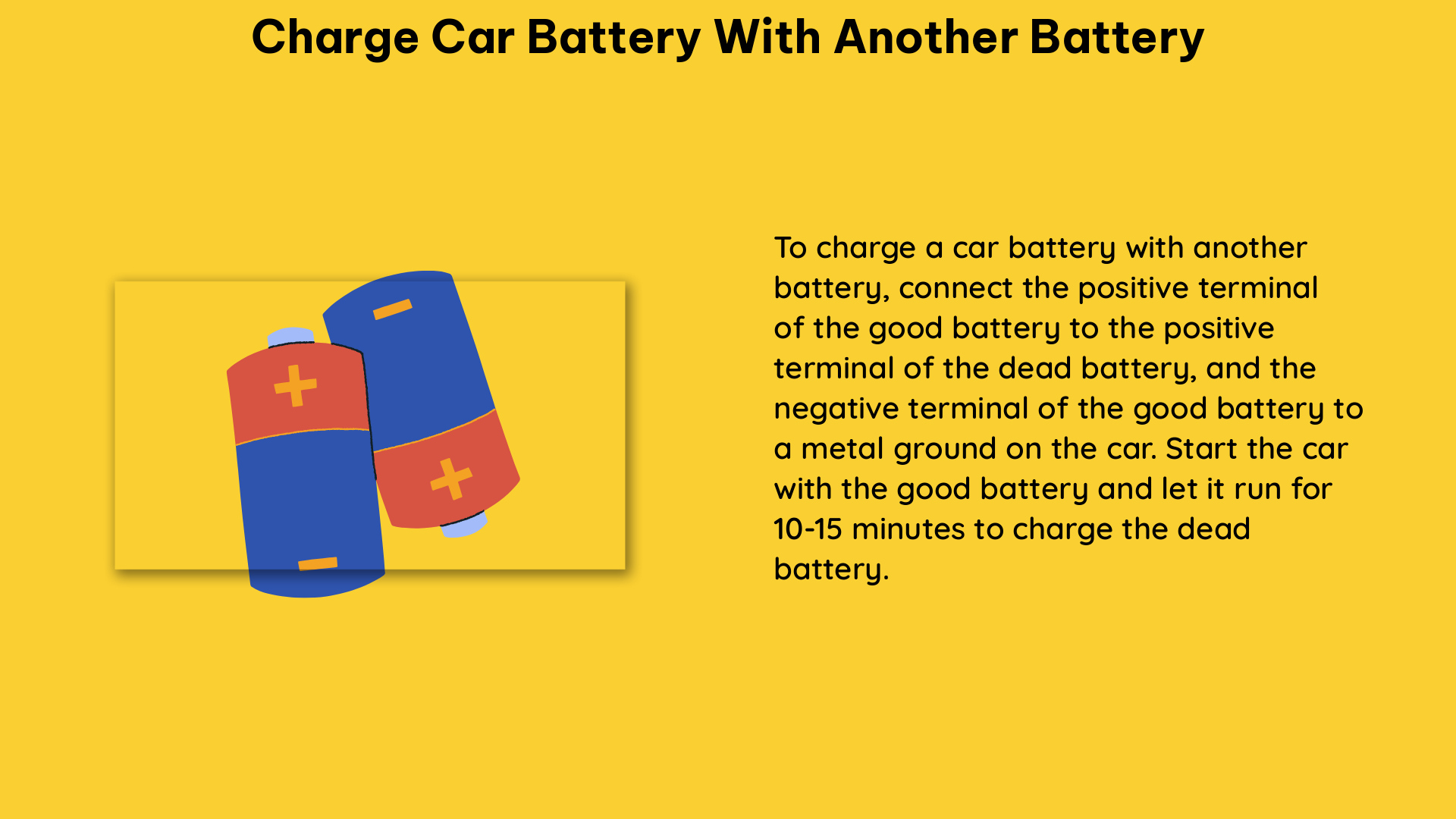Charging a car battery with another battery can be a convenient solution when your car’s battery is dead, but it requires careful consideration to avoid potential damage to the batteries or the vehicles. This comprehensive guide will provide you with the technical specifications and step-by-step instructions to safely and effectively charge a car battery using another battery.
Understanding Lead-Acid Batteries
The most common type of battery used in cars is the lead-acid battery, which has a nominal voltage of 12V. These batteries are rechargeable and can be charged using a dedicated battery charger or by connecting them to another battery.
Battery Voltage and Charging Voltage
When charging a lead-acid battery, it is essential to use a charger that provides a voltage of around 13.8V to avoid overcharging. Overcharging can lead to the battery’s internal components being damaged, reducing its lifespan and performance.
Battery Capacity and Charging Rate
The capacity of a car battery is typically measured in Ampere-hours (Ah), with a common range of 40Ah to 80Ah. The charging rate is usually specified in Amps (A), and it is recommended to charge the battery at a rate no higher than 20% of its capacity.
For example, a 60Ah battery should be charged at a rate of no more than 12A (60Ah x 0.2 = 12A). Charging at a higher rate can generate excessive heat, which can damage the battery.
Charging a Car Battery with Another Battery

To charge a car battery with another battery, follow these steps:
-
Ensure Battery Compatibility: Verify that both batteries have the same nominal voltage of 12V. Connecting batteries with different voltages can cause damage to the batteries or even a fire.
-
Prepare the Batteries: Ensure that both batteries are clean and free from any corrosion or damage. If the battery being charged is severely discharged, it may be necessary to use a dedicated battery charger to bring it to a safe voltage level before attempting to charge it with another battery.
-
Connect the Batteries: Use jumper cables to connect the positive (+) terminal of the good battery to the positive (+) terminal of the dead battery. Then, connect the negative (-) terminal of the good battery to a metal ground on the vehicle with the dead battery, such as an unpainted bolt or the engine block.
-
Monitor the Charging Process: Observe the charging process closely. The good battery should start charging the dead battery, but the charging rate should not exceed 20% of the dead battery’s capacity. If the charging rate is too high, the good battery may be damaged.
-
Disconnect the Batteries: Once the dead battery has been sufficiently charged, disconnect the jumper cables in the reverse order: first the negative (-) connection, then the positive (+) connection.
-
Start the Vehicle: After disconnecting the batteries, try to start the vehicle with the recharged battery. If the vehicle does not start, the battery may still be too weak, and further charging may be necessary.
Precautions and Safety Considerations
When charging a car battery with another battery, it is essential to take the following precautions:
- Wear Protective Gear: Always wear safety glasses and gloves when working with batteries to protect your eyes and skin from potential acid spills or explosions.
- Avoid Sparks and Flames: Batteries can produce flammable hydrogen gas during charging, so it is crucial to avoid any sources of ignition, such as sparks or open flames, near the charging area.
- Ventilate the Area: Ensure the charging area is well-ventilated to allow any hydrogen gas to dissipate.
- Disconnect Batteries Properly: Always disconnect the batteries in the correct order (negative first, then positive) to avoid any potential short circuits.
- Monitor Battery Temperature: If the battery being charged becomes excessively hot, disconnect the charging process immediately to prevent damage.
- Dispose of Batteries Properly: When a car battery reaches the end of its useful life, it should be disposed of or recycled according to local regulations, as lead-acid batteries contain hazardous materials.
Conclusion
Charging a car battery with another battery can be a practical solution, but it requires careful attention to technical details and safety precautions. By following the guidelines outlined in this comprehensive guide, you can safely and effectively charge a car battery using another battery, ensuring the longevity of both batteries and the safety of your vehicle.
References
- Battery University, “Charging Lead Acid,” https://batteryuniversity.com/article/bu-403-charging-lead-acid
- Reddit, “Is charging a car battery by hooking it up to another running car a good method?”, https://www.reddit.com/r/batteries/comments/z45duf/is_charging_a_car_battery_by_hooking_it_up_to/
- Electronics Stack Exchange, “For how long should I charge my dead car battery without damaging it?”, https://electronics.stackexchange.com/questions/632124/for-how-long-should-i-charge-my-dead-car-battery-without-damaging-it

The lambdageeks.com Core SME Team is a group of experienced subject matter experts from diverse scientific and technical fields including Physics, Chemistry, Technology,Electronics & Electrical Engineering, Automotive, Mechanical Engineering. Our team collaborates to create high-quality, well-researched articles on a wide range of science and technology topics for the lambdageeks.com website.
All Our Senior SME are having more than 7 Years of experience in the respective fields . They are either Working Industry Professionals or assocaited With different Universities. Refer Our Authors Page to get to know About our Core SMEs.